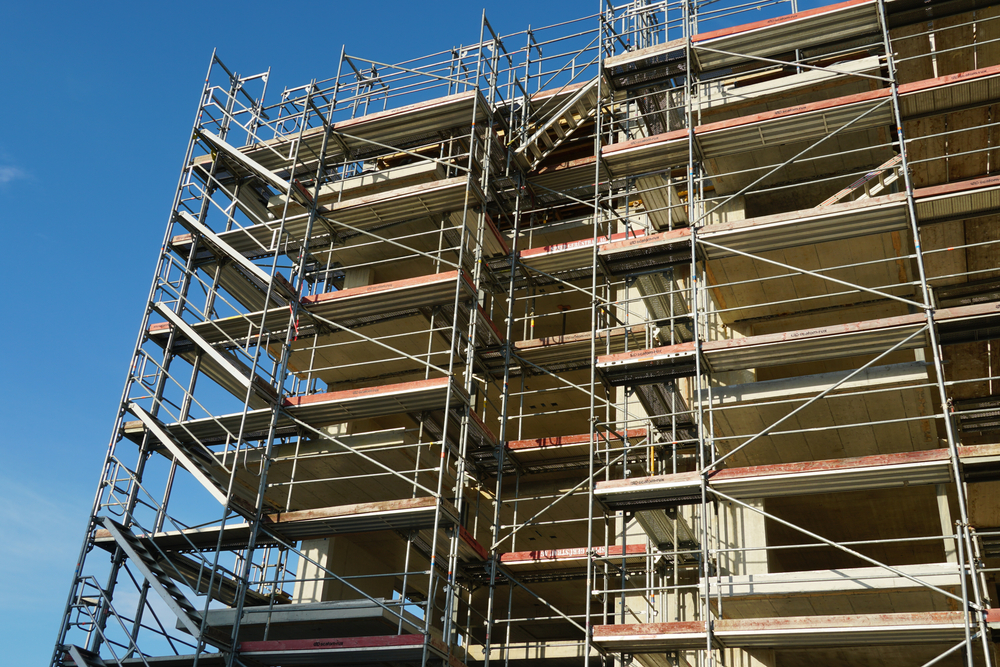The Notre-Dame Basilica, located in the heart of Montreal, Quebec, is a masterpiece of Gothic Revival architecture and a symbol of the city’s rich religious and cultural heritage. This case study examines the critical role of scaffolding in the meticulous restoration and preservation efforts of this iconic landmark.
Introduction to Notre-Dame Basilica
Built in the early 19th century, the Notre-Dame Basilica of Montreal is renowned for its stunning interior featuring intricate woodwork, vibrant stained glass windows, and a grand Casavant Frères pipe organ. It is a popular tourist attraction and an active parish church, hosting numerous concerts and events.
Project Overview: Restoration and Preservation Challenges
Over decades of exposure to Montreal’s climate and environmental factors, the Notre-Dame Basilica’s exterior stonework, interior finishes, and iconic spires required extensive restoration to preserve its architectural integrity and historical significance. The project aimed to address several critical challenges:
- Preservation of Architectural Heritage: Ensuring that restoration efforts respected and maintained the original Gothic Revival design of the basilica, including its ornate facade, intricate carvings, and decorative elements.
- Structural Rehabilitation: Repairing and stabilizing deteriorating masonry, addressing water infiltration issues, and reinforcing structural elements to protect the basilica’s interior artworks, organ, and historic artifacts.
- Safety and Access: Providing safe and efficient access for restoration teams to work at heights and around delicate architectural features, such as the basilica’s soaring vaulted ceilings, ornamental columns, and stained glass windows.
Scaffolding Solution
To facilitate the comprehensive restoration and enhancement of the Notre-Dame Basilica, a sophisticated scaffolding system was crucially implemented:
- Custom Design: Scaffolding engineers collaborated with preservation architects and structural engineers to design a specialized scaffolding structure. This structure needed to safely access all areas requiring restoration, including the basilica’s towers, spires, and intricate facade details.
- Adaptability: The scaffolding system was meticulously tailored to conform to the unique contours and architectural features of the Notre-Dame Basilica. It provided secure platforms for restoration specialists to conduct detailed inspections, cleaning, repair, and conservation work without disrupting the basilica’s daily religious services or obstructing visitor access.
- Safety Features: Robust safety measures, such as advanced guardrails, protective netting, and non-slip surfaces, were integrated into the scaffolding design. These features ensured the safety of workers and protected the basilica’s delicate interior finishes and historic artifacts during restoration activities.
- Logistical Planning: Detailed planning was essential to coordinate scaffolding assembly and dismantle schedules around the basilica’s religious ceremonies, special events, and visitor tours. This minimized disruption to basilica operations and ensured a seamless experience for parishioners and tourists alike.
Implementation and Execution
The restoration of the Notre-Dame Basilica followed a meticulously planned timeline and methodology:
- Site Preparation: Thorough preparations were made to secure the basilica grounds and surrounding areas before scaffolding installation, ensuring the safety of parishioners, visitors, and workers throughout the restoration process.
- Scaffolding Assembly: Engineers and construction teams carefully erected the scaffolding structure around the Notre-Dame Basilica, aligning it precisely with the basilica’s architectural features and contours. This provided restoration specialists with stable platforms to conduct detailed cleaning, repair, and conservation work on exterior stonework and decorative elements.
- Interior Restoration Work: Skilled craftsmen and conservation experts utilized the scaffolding platforms to perform a range of tasks inside the basilica, including woodwork restoration, stained glass window cleaning, and the conservation of religious artifacts. Special attention was given to preserving the basilica’s historic Casavant Frères pipe organ and enhancing acoustic features.
- Quality Assurance: Ongoing inspections and quality checks were conducted throughout the restoration project to ensure adherence to conservation standards, safety regulations, and the highest levels of craftsmanship. This meticulous approach ensured that the Notre-Dame Basilica’s historical significance and architectural beauty were preserved for future generations.
Benefits and Outcomes
- Preservation of Cultural Heritage: The scaffolding system enabled precise access to delicate architectural features, facilitating the preservation and enhancement of the Notre-Dame Basilica’s iconic Gothic Revival design and cultural significance.
- Enhanced Structural Integrity: By providing stable and secure platforms, the scaffolding system supported effective restoration activities. This ensured the basilica’s long-term structural stability and resilience against environmental factors.
- Community Impact: The successful restoration of the Notre-Dame Basilica contributed to Montreal’s cultural landscape and religious heritage. It reinforced the basilica’s role as a prominent religious and cultural institution, attracting visitors and parishioners from around the world.
Conclusion
The restoration of the Notre-Dame Basilica exemplifies the indispensable role of scaffolding in preserving and enhancing historic landmarks. Through meticulous planning, innovative solutions, and a commitment to architectural preservation, scaffolding facilitated the successful completion of this prestigious project while safeguarding the basilica’s legacy as a symbol of Montreal’s rich religious and cultural heritage. As Montreal continues to celebrate its vibrant history, the restoration of the Notre-Dame Basilica underscores the enduring value of historical preservation and the essential role of scaffolding in achieving these preservation goals with precision, safety, and reverence for cultural significance.

